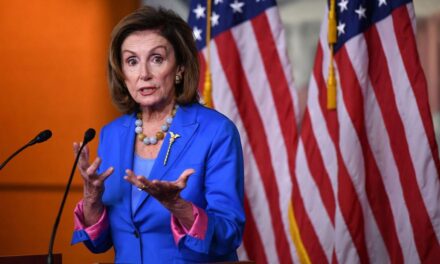
Covid Live News: Updates on the Virus, Vaccines and Variants

Memorial Day weekend is underway in the United States, and things are decidedly different for travelers than they were a year ago.
More than half of all adults in the United States have now been fully vaccinated, according to the Centers for Disease Control and Prevention. A federal mandate requires travelers in airplanes or on public transportation to wear masks, though most airlines then were asking passengers to wear them. And many, many more people are likely to leave town for the holiday this year than in 2020.
Darby LaJoye, the acting administrator at the Transportation Security Administration, said that the number of travelers at U.S. airports has been increasing steadily during the spring, reaching nearly 1.9 million last Sunday, nearly eight times the figure for May 17, the comparable Sunday in 2020.
That number is likely to be exceeded over the holiday weekend, the latest crest in the recent waves of returning travelers, with the agency predicting that airports would probably see two million passengers in a day. Mr. LaJoye said that the increasing number of passengers could lead to longer wait times at security checkpoints.
AAA, the automobile owners group, predicted earlier this month that, all told, more than 37 million people would travel 50 miles or more from Thursday to Monday — a 60 percent increase from last year, though still 9 percent below 2019. A great majority will travel by car.
“We will continue to see a very steady increase as we approach the summer travel season,” Mr. LaJoye said. “As vaccinations continue to rise and confidence continues to build, the nation’s planes, trains, buses and roads are going to be heavily traveled.”
To help control the spread of the virus, the T.S.A. has erected acrylic barriers, installed new machines allowing some passengers to scan their own documents and adjusted the rules to allow passengers to have up to 12 ounces of hand sanitizer in their carry-on bags.
A year ago in the United States, there was no authorized coronavirus vaccine, mask requirements were left up to local officials and individual carriers and air traffic was sparse.
Now, people 12 or older can get vaccinated, and those who choose to travel have a sense of their own safety that even the boldest voyagers last year did not. (Still, traveling, and many other activities, can be complicated for younger children and their families).
“Thanks to vaccines, tens of millions of Americans are able to get back to something closer to normal, visiting friends and family,” Dr. Rochelle Walensky, the director of the C.D.C., said this week at a news conference.
This year’s holiday falls at a time when parts of the world, like the United States and the European Union, are progressively reopening their borders and allowing tourism to restart. But the virus continues to ravage other areas, notably India, South America and Southeast Asia, where vaccine supplies are scarce and worrisome virus variants have been detected.
As it happens, the average number of new cases being reported in the U.S. is about the same now as it was around Memorial Day last year, about 23,000 a day, though testing was far scarcer as the pandemic initially hit. In each case, the figure had been declining from a recent peak in mid-April.
Last year, reports of revelers ignoring mask and social distancing rules over the holiday weekend were legion. Within weeks of some states reopening, virus cases were starting to surge to record levels. Jumps in virus cases have been seen after other holiday weekends, Dr. Walensky noted this week.
Now that many people have been vaccinated, any virus outbreaks in the United States after the holiday will probably look different, according to Dr. Wafaa El-Sadr, an epidemiologist at Columbia University. She said she was concerned about “micro-epidemics” in vulnerable areas.
“We could potentially see these surges focused in specific communities, where there’s low vaccination rates and low masking rates,” Dr. El-Sadr said.

The German company CureVac said on Friday that its Covid-19 vaccine had passed its first interim analysis, but that it was not yet ready to share data on how well it protects against infection. The shot could be cheaper and more accessible to low-income countries that lack vaccines.
The company said that an independent Data Safety Monitoring Board found no safety concerns. But the board did not share any efficacy data, suggesting that it’s not yet clear just how much protection the vaccine provides.
“The trial will continue to collect sufficient data in order to conduct statistically significant efficacy analysis,” the company said in its statement.
The CureVac vaccine is based on mRNA technology, like the ones developed by Moderna and Pfizer-BioNTech. Those vaccines are in use in the United States and the European Union and have proved to be highly effective, boosting hopes that CureVac’s might provide similarly strong protection against Covid-19.
CureVac’s vaccine might have some advantages over the other mRNA vaccines. It can be stored in a refrigerator for at least three months at 41 degrees Fahrenheit, and it can sit for 24 hours at room temperature before it is used.
In their initial formulations, the Moderna and Pfizer-BioNTech vaccines had to be kept in a deep freeze. Both companies have been tinkering with their recipes to make their vaccines more stable at warmer temperatures, which may broaden their use in poorer countries where freezing poses a challenge.
CureVac’s doses might also turn out to be cheaper than the others. Public Citizen, a consumer advocacy organization, released a report Wednesday from researchers at Imperial College London, estimating the costs of producing enough RNA vaccines to provide herd immunity in low- and middle-income countries. Researchers found that iIt would cost $23 billion to make 8 billion doses of Pfizer-BioNTech, $9 billion for Moderna and just $4 billion for CureVac.
Last year, the company’s vaccine had promising results when used on animals. By December they had launched their final clinical trial, recruiting 40,000 volunteers in 10 countries in Latin America and Europe. On Wednesday, CureVac indicated that further information about its vaccine trial would arrive by the end of June.
Catch Up

President Biden this week ordered U.S. intelligence agencies to investigate the origins of the coronavirus, indicating that his administration takes seriously the possibility that the deadly virus was accidentally leaked from a lab in China.
The president’s statement on Wednesday was an abrupt shift. Until Wednesday, the White House hewed to the prevailing theory that the virus was transmitted by an animal to humans outside a lab and maintained that the World Health Organization was the proper agency to handle an international inquiry. A report from a joint inquiry by the W.H.O. and China that was issued last month described the chances that the virus had slipped out of the lab as “extremely unlikely.”
Mr. Biden gave the C.I.A. and other intelligence agencies 90 days to investigate, a move that came after intelligence officials told the White House they had unexamined evidence that required additional computer analysis that might shed light on the mystery, according to senior administration officials. Officials declined to describe the new evidence, but the push suggests that there is more to examine in the archives than previously thought.
Mr. Biden’s push is intended to prod American allies and intelligence agencies to mine existing information — like intercepts, witnesses or biological evidence — as well as hunt for new intelligence to determine whether the Chinese government covered up an accidental leak.
The effort to uncover the origins of the coronavirus began more than a year ago, during the Trump administration, but many were skeptical of the former president’s motives to investigate. Current officials say the central goal of the new intelligence push is to improve preparations for future pandemics. As a result, Mr. Biden’s message this week was calibrated to leave open the possibility of future cooperation with China.
Mr. Biden committed on Thursday to making the results of the review public, but added a caveat: “unless there’s something I’m unaware of.”
Here’s what else happened this week:
-
New studies have found that immunity to the coronavirus can last at least a year, and possibly a lifetime, improving over time especially after vaccination. The studies suggest that most people who have recovered from Covid-19 and who were later immunized will not need boosters. Vaccinated people who were never infected most likely will need boosters, however, as will a minority who were infected but did not produce a robust immune response.
-
Over the last year, Apple and Google helped states create virus alert apps that have been downloaded more than 90 million times. But researchers don’t yet know whether the apps’ ability to alert users to virus exposure outweighs potential drawbacks, like falsely warning unexposed people, raising questions about the power of Big Tech to set global standards for public health tools.
-
The pandemic forced millions of women — particularly those with children — to either leave their jobs or downsize their careers, spurring what many economists are calling the world’s first “she-cession.” In the United States, White House advisers and members of Congress have held up women’s enormous job losses as an urgent reason to expand investment in child care by historic proportions. But a study published in April by the National Bureau of Economic Research found that child care is not the only contributing factor: labor protections or the ability to work remotely played equally significant roles in determining levels of female employment.

















